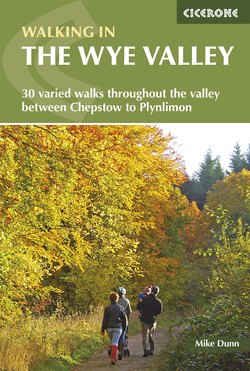Читать книгу Walking in the Wye Valley - Mike Dunn - Страница 13
На сайте Литреса книга снята с продажи.
ОглавлениеWALK 3
The Devil’s Pulpit from the east
| Start/Finish | The Park, Tidenham Chase (ST 993 558) |
| Distance | 6km (4 miles) |
| Ascent | 90m (295ft) |
| Time | 2hrs |
| Map | Outdoor Leisure 14 |
| Public transport | Tidenham Chase has no public transport services useful for walkers |
| Parking | Car park on the west side of the B4228, signposted for Offa’s Dyke |
This is an easy and relatively short walk that nevertheless includes spectacular stretches of the Saxon earthwork of Offa’s Dyke, with a remarkable view of Tintern Abbey, and which crosses restored heathland teeming with wildlife and grazed by Exmoor ponies.
Go past the Forestry Commission sign for The Park at the edge of the car park, taking the obvious track across the open heath of Tidenham Chase. Once the hunting ground of Chepstow Castle, the Chase is the most significant fragment of lowland heathland to survive in Gloucestershire and now forms an inviting and attractive recreational resource.
Tidenham Chase is now being actively managed to improve the habitat by restoring native woodland and clearing plantations in order to increase the area of sandy heathland, using Exmoor ponies for grazing to encourage re-colonisation by heather, bilberry and gorse. The area is now developing as prime habitat for butterflies and dragonflies, snakes, lizards and a range of birds including nightjar and woodcock in spring and summer, and crossbills, redpolls and siskins in winter.
The track across the heath soon reaches a trig point. Keep this on your left and go through a wooden kissing gate onto a clear track as far as Miss Grace’s Lane. Despite being named after a 20th-century occupant, this lane lies on the route of a prehistoric trackway connecting the Severn at Woolaston with the Wye at the river port of Brockweir. Go left and immediately right across the lane, onto a track signposted to Offa’s Dyke Path and the Devil’s Pulpit. This route was formerly known as Abbey Road because it led towards the abbey and ferry at Tintern. An easy walk now crosses four fields, with good views to the Cotswold ridge beyond the Severn, then enters woodland again and immediately arrives at Offa’s Dyke Path; 50m to the left is the Devil’s Pulpit – an extraordinary clifftop lookout.
The approach to the Devil’s Pulpit
The Devil’s Pulpit is a spectacular rock stack standing proud from the cliff face with sensational views of Tintern Abbey (built by the Cistercians in the late 13th century) far below on the opposite side of the river. The devil is reputed to have preached to the monks from his pulpit – already known as such by 1769 – to divert them from their ways.
The route now lies south, along one of the best-preserved sections of Offa’s Dyke, with earthen ramparts up to 6m (20ft) high, but now threatened by badgers and walkers. The dyke was constructed in the second half of the eighth century both as a defensive earthwork and as a show of strength, designed to keep Welsh forces at bay and protect the King’s lands in Mercia. The path, enormously popular here and rebuilt with a gravelly surface, contours above the great limestone face of Plumweir Cliff, with the ancient fishery of Plum Weir far below. The trees have been felled in places to reveal views of the Wye, with the magnificent sight of Tintern Abbey the highlight. The path used to run along the top of the earthwork, with the stones used in its construction exposed and tree roots making this section tricky to negotiate, but a new path has been constructed just to the left to preserve the Dyke.
A right turn onto a path running just below the Dyke provides excellent views of the ditch and rampart from below. The new path eventually arrives at a wide track; turn left here, and when Offa’s Dyke Path swings away to the right at an informal parking area, take the very roughly surfaced lane going up past cottages to the B4228. Turn left here, then right after 100m or so onto a thin but clear path (not marked on the map, but within the open access land of Parson’s Allotment, close to where Bronze Age flints were found) that crosses an open area, enters woodland and passes a few big boulders to meet a track. Go straight across here, then half-left onto another, straight track that goes through mixed woodland and then negotiates a coppice with the Church of St Michael and All Angels in Tidenham Chase visible on the left across the road. The land for the church was given by the owner of Chase Farm, who became the first organist; the second was her friend Miss Grace, who gave her name to the lane crossed earlier.
